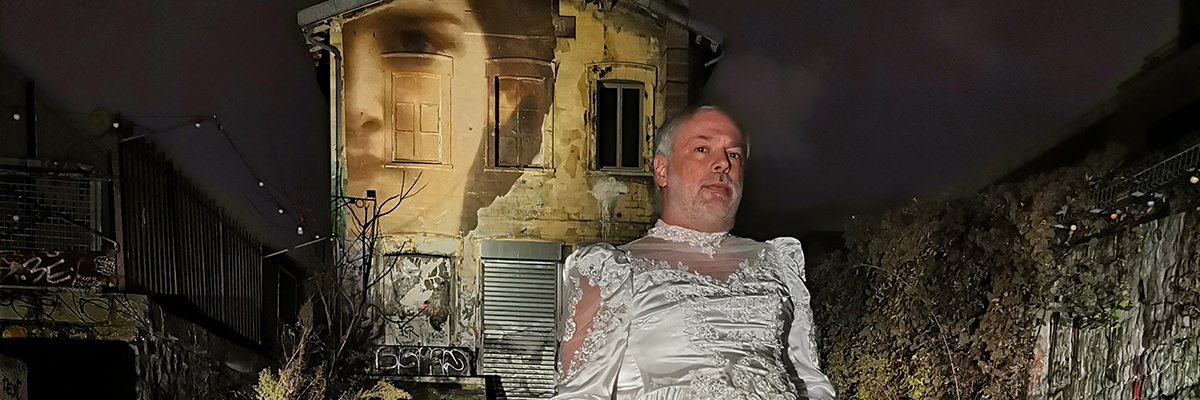“Grand Mozeur Feukeur.”
French Street Artist Julien de Casabianca is debuting a new series of photographs that may appear as a surprising departure from his previous multi-year multi-city OUTINGS project, but a closer examination contains many similarities between that one and “Grand Mozeur Feukeur”.
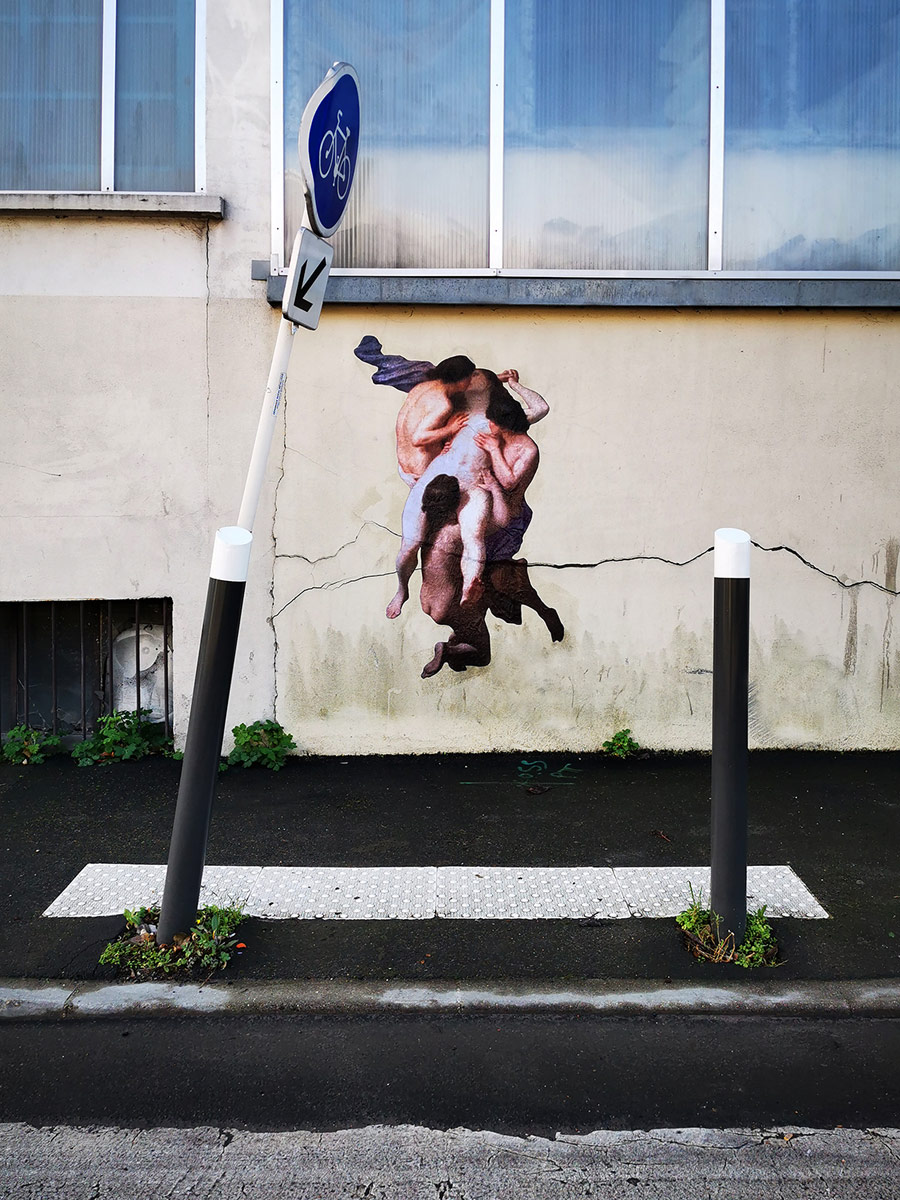
The street artist’s pastings for his OUTINGS Project featured scenes from figurative artworks, classical and modern, from museum collections. Julien de Casabianca wanted the images displayed on facades of buildings in public view rather than hidden away for a limited audience. By bringing outside these selected artworks from cultural institutions worldwide, the artist created a genuinely new category of street art, which doesn’t occur with the frequency you might expect.
From Poland to Mexico to Palestine and Vietnam, OUTINGS expanded to be many things at once, including a form of public service that exposed passersby to cloistered artists whose works were prized but generally unseen by the everyday citizen, therefore unconsidered. Everyone was required to re-think the artworks as well as their pre-conceptions of propriety.
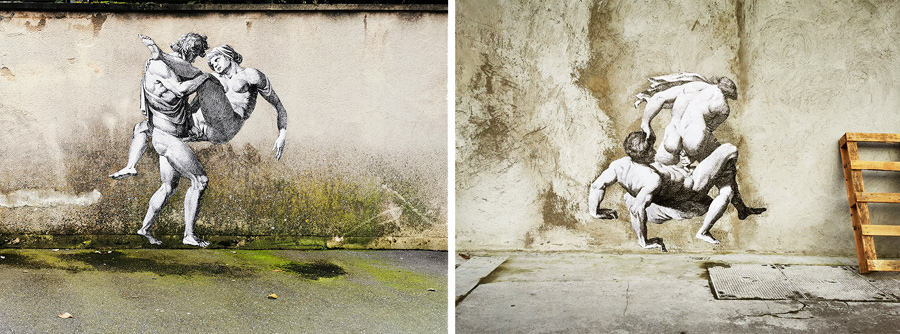
Sometimes partnering directly with local art institutions, Casabianca traveled the world, bringing images into the light of day. Considered anew in this city street context, these excised images took on newly discovered relevance, weights, and character. While some appeared as ghosts of the past, others were remarkably contemporary in these modern surroundings. With the implied or explicit imprimatur of academics and art institutions, his novel approach to art on the streets was timely and of our time, short-circuiting convention and garnering countless press articles in cities and cultures widespread.
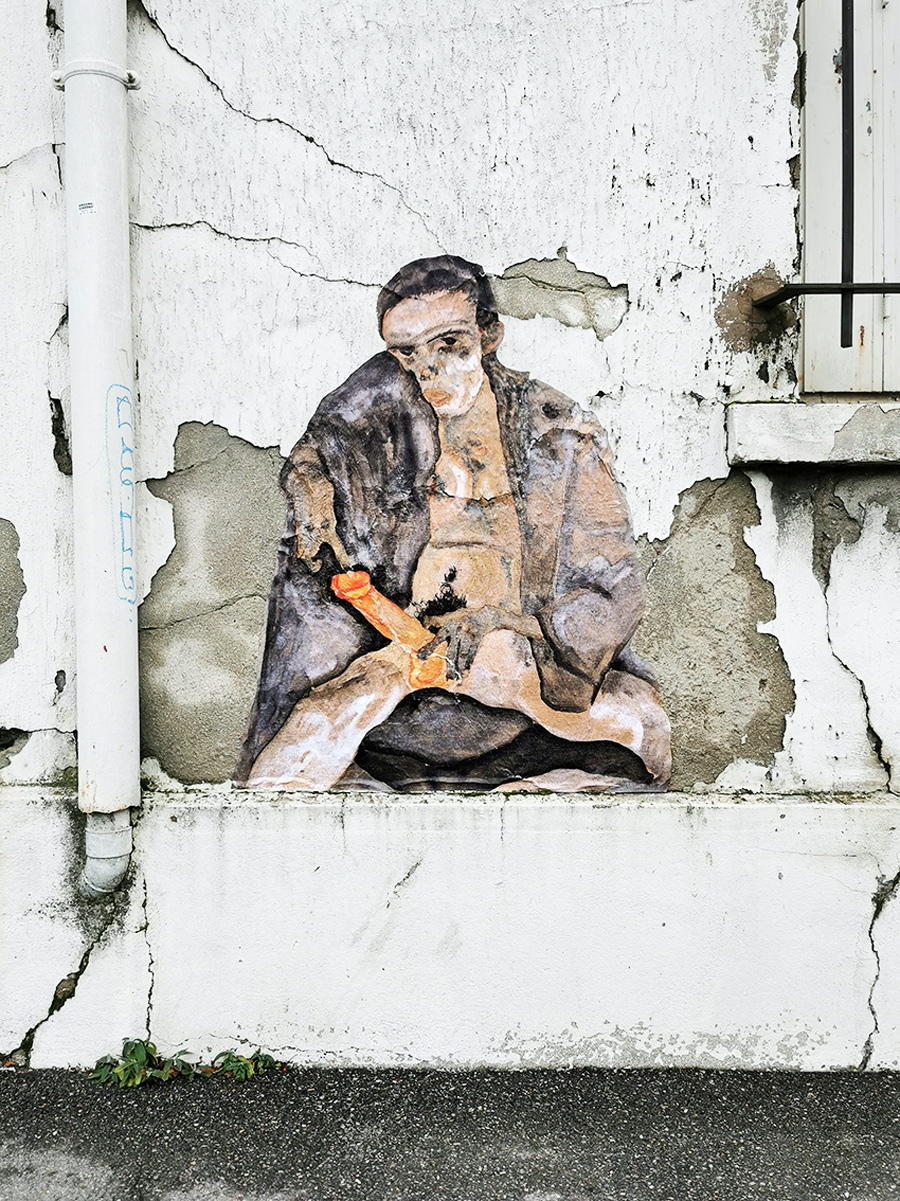
For one campaign, he selected only “sex scenes,” as he calls them. Motivated by his disappointment at the lack of sexual themes in the street art scene, Julien de Casabianca isolated duos and polyamorous parties engaged in the erotic arts. “It was my first step of questioning sex, gender, and body in street art,” he tells us in an exclusive interview. A redefining of the street art scene, which can be ironically conventional considering its unconventional origins, was necessary.
“My pasting work used characters taken directly from classical paintings – and I put them in the streets,” he says. “There were dozen of sex scenes – heterosexuals and homosexuals – extracted from classical paintings.”
The impulse to expose audiences to these images was liberating, leading him to publish a manifesto on the streets of his home city, Paris. The long screed excoriated his fellow street artists worldwide for what he perceived as their lack of bravery and possibly hypocrisy by avoiding explicitly sexual scenes.
One excerpt says, “What’s wrong with you guys? Street artists are the purest of them all, then? The least ballsy, apparently. The least boobsy too.”
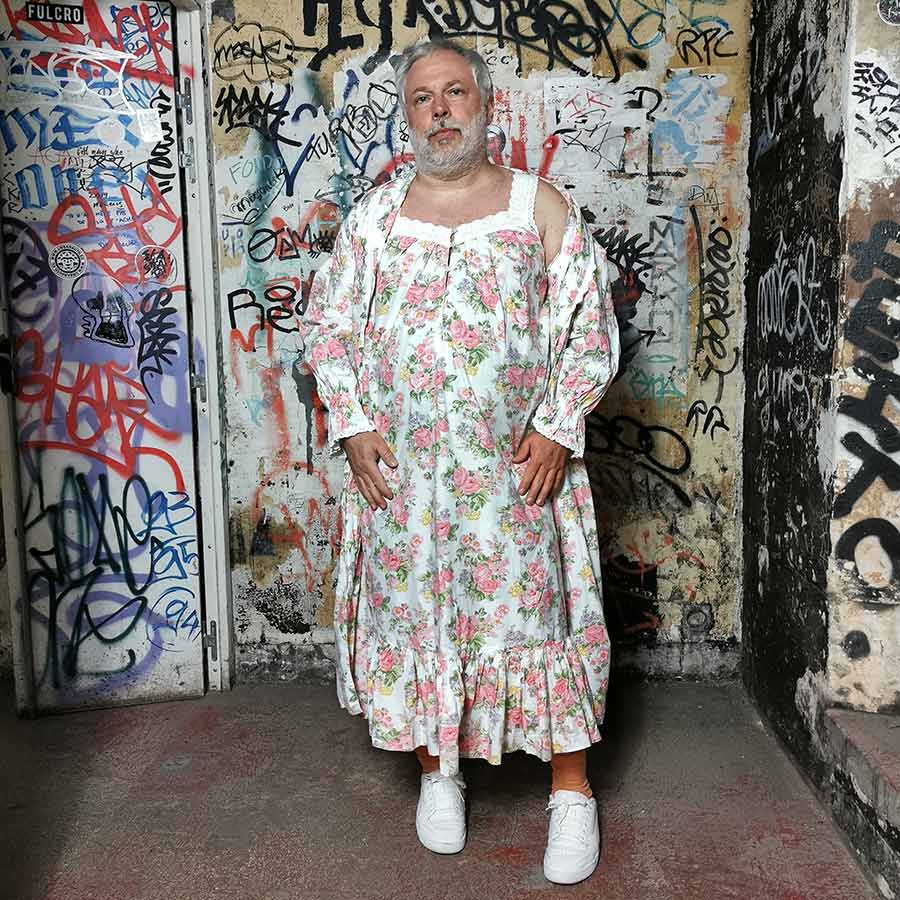
Today, following his own counsel, Casabianca presents a personal campaign in photographs that again introduces themes infrequently seen on the street, this time using himself as muse and canvas. As LGBTQ issues have mingled with a volley of newly coined terms and freshly minted (often self-appointed) experts in the academy, the media, and the street, many everyday persons have continued to navigate through life with seemingly new definitions of gender identity. This new campaign may clarify, or not.
As an artist familiar with both public display and figurative artwork, Casabianca models here his unique flair for fashion. He also displays a previously little-known relationship with gender, sexuality, and our coding guidelines for classification of each. In this new project, he models dresses that he has collected, each endowed with several associations and assumptions.
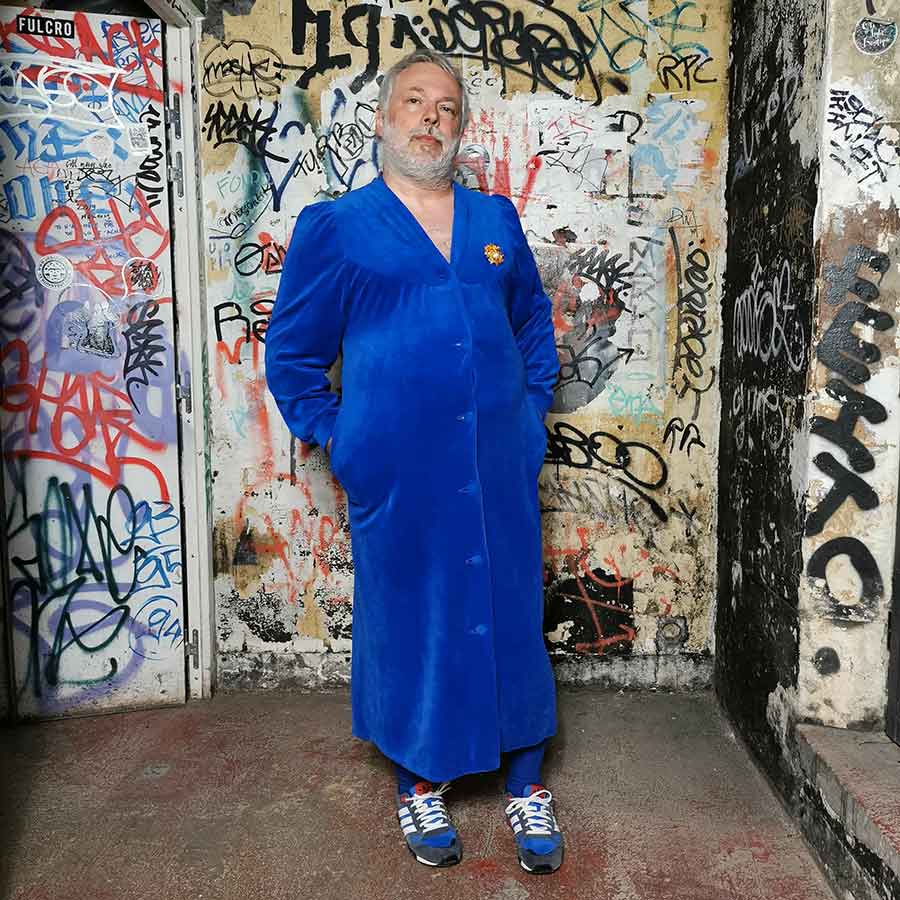
As in the OUTINGS project, these photographs are excised from their original intended context, if you will, and given a new venue for consideration. Along with the quality of materials and construction, the viewer will evaluate categories such as “day” or “evening,” occasion, income level, social status, age, gender, sexuality, sexual availability, and degrees of masculinity or femininity.
“This new series of pictures presents my body as a form of street art. I do not see the body used in street art either, but I believe it can be a kind of contemporary art performance,” he says in his description of the new project he’s calling “Grand Mozeur Feukeur.”
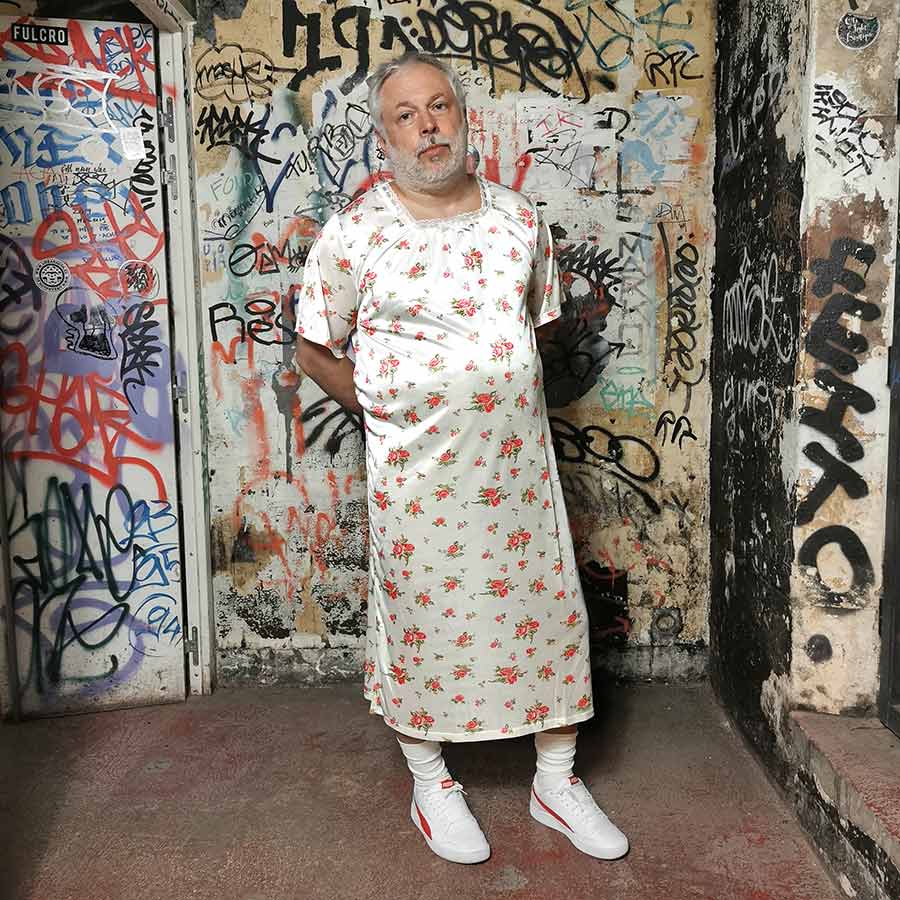
Paired with footwear that is not typical for the styles of dress, he poses with some deadpan expressions, occasionally appearing as solicitous, coy, non-plussed, or decisive. You may even say they are a parody of the poses in classical antiquity or fashion magazines. This is a very personal act of self-exposure, and the project reveals his questioning of identity and the paradox of self-expression – and society’s propensity for categorizing.
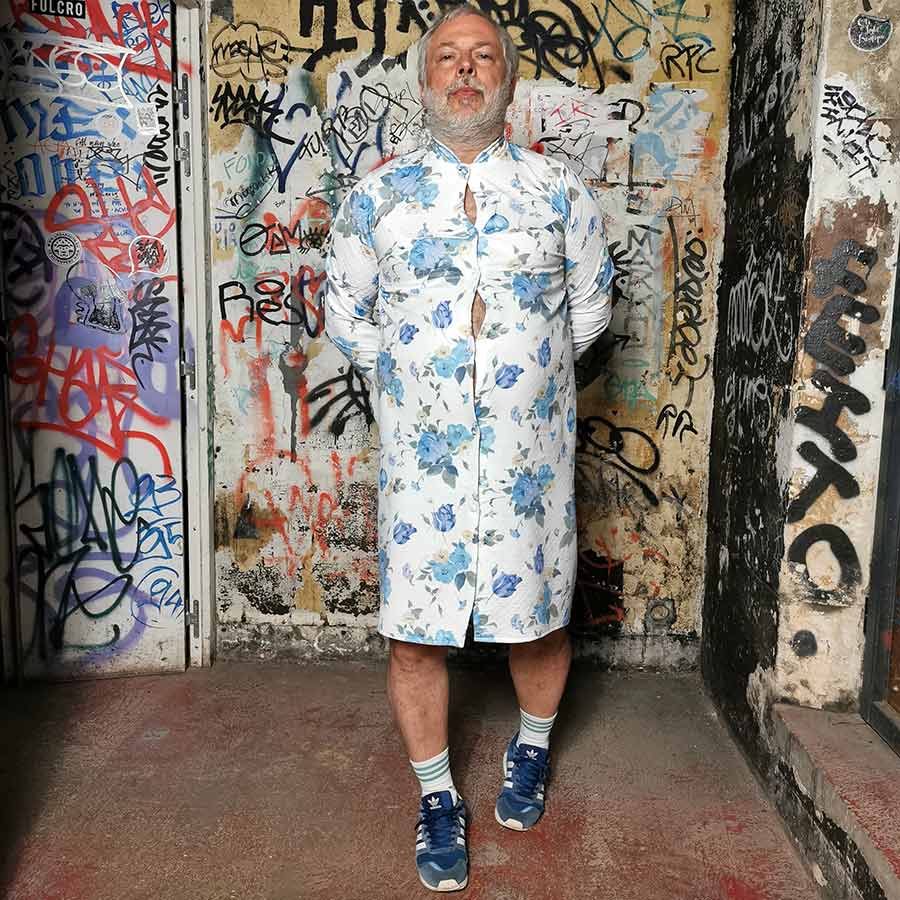
In total, “Grand Mozeur Feukeur” is a very intimate, provocative presentation that may surprise and draw closer examination by viewers. Grand, severe, and even humorous, the performer/muse/artist places himself against a “typical” scene of urban aerosol graffiti tags on walls. – It’s not exactly street art, yet you can imagine some of these images may end up on the street in a city near you.
“This work questions gender,” he says. “There is a malaise in the masculine aspect in our society at this moment, and I’m uncomfortable with manhood. I’m not gay; I’m a boy-girl, maybe. I’m attracted to women but not attracted to the heterosexual way of being. I identify as queer, and I’m sexually attracted to people who identify as this as well. Heterosexuality is a lifestyle. I may be something like a cross-dyke, because “dyke” at one time was a slang term for a well-dressed man. A well-dressed man for me is a man in a dress. A man cross-dressed.”
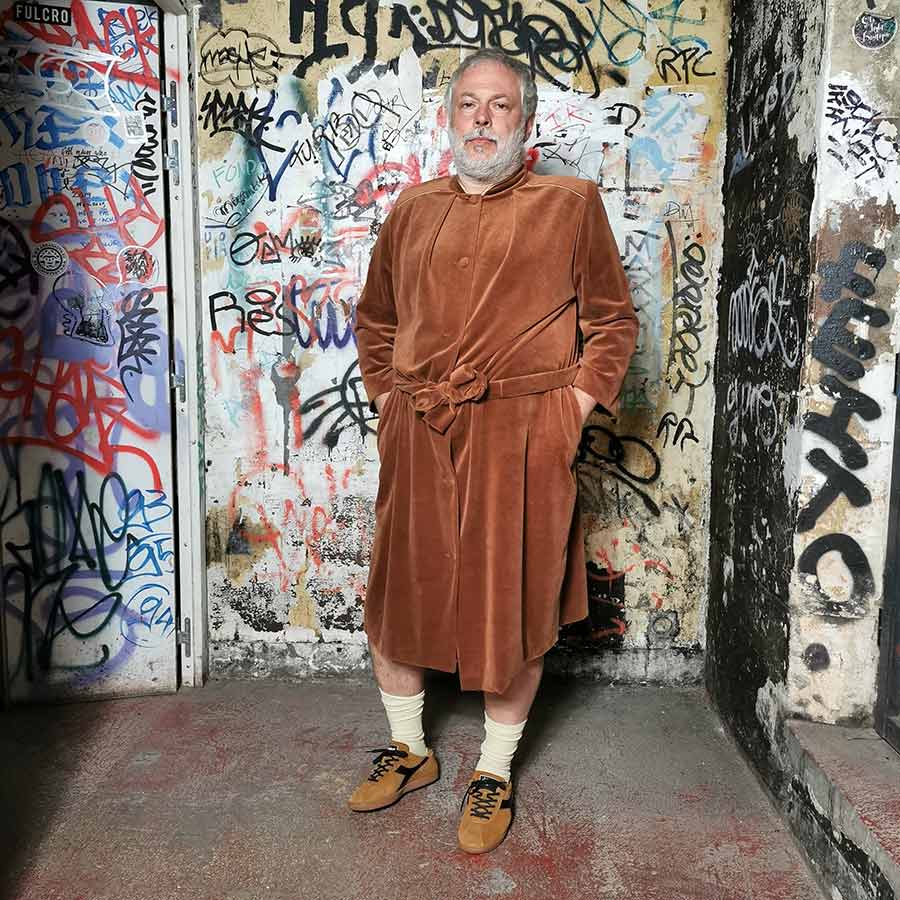
BSA interviewed Julien de Casabianca about his new project:
Brooklyn Street Art (BSA): Can you talk about what led you from your previous street art project to this new one? A number of those pasted works focused on sexual and erotic themes. Is the new project related to each other in any way?
Julien de Casabianca (JC): My OUTINGS work uses characters removed from classical paintings to paste them in the streets. I pasted a dozen sex scenes extracted from classical paintings in Paris streets, and I published the series in Nuart Journal. Some were heterosexuals in nature, and some were homosexual. So this was my first step in questioning sex and gender in street art. And I discovered how sex and gender are rare in street art.
Sexuality is seldom discussed, except in a way meant to be comical. Homosexuality is rarely addressed, except in a political way, in defense of visibility, for example. Rarely are these themes presented for just what they are: sex and love. So once I realized this, it opened my eyes, and I decided to continue to work on these queer questions.
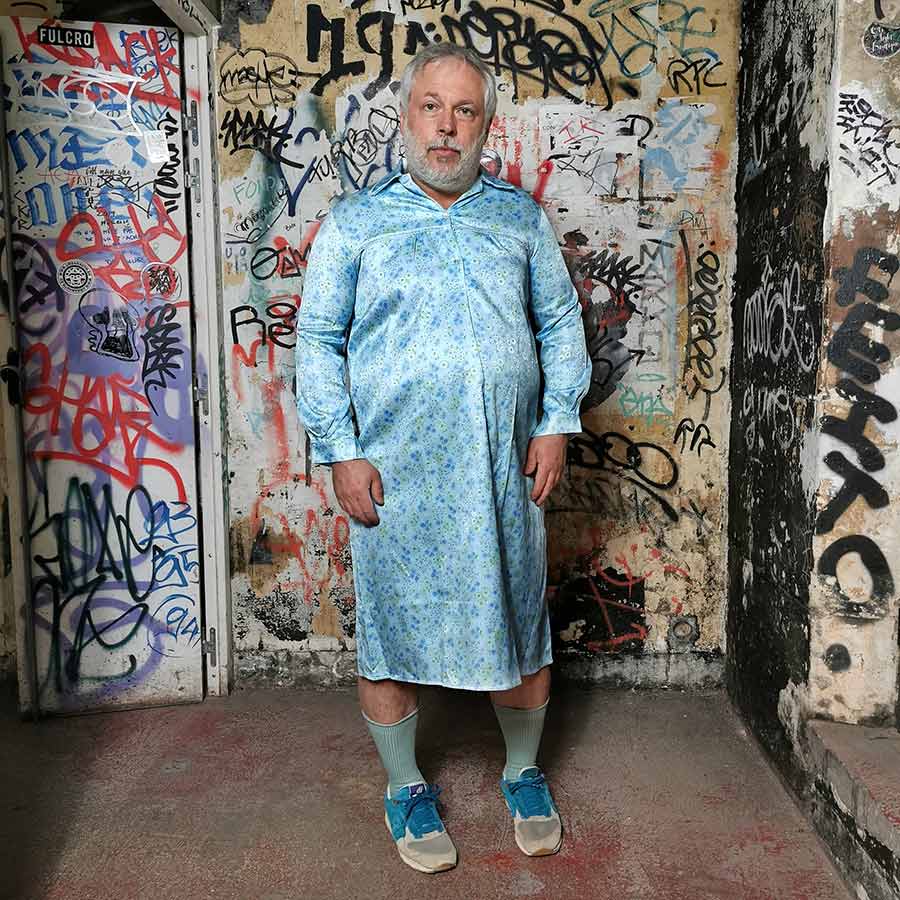
BSA: The dresses present a traditional look at female gender roles. Here they are contrasted with perhaps more modern classic male presentation. How is a costume/dress selected?
JC: These are only “old lady” dresses, grand-mother style. I’m fascinated by kitsch and how there can be a beautiful state in the sublimation of ugly. I think these dresses fit me really well. Since I was 15 years old, I always wore these dresses when I went to a queer party. I did not intend it as a travesty or an absurdity, not just to “dress up.” It is just because I’m beautiful in it! I don’t act like a girl. I’m a man, with my virility intact, and I’m absolutely not androgynous. And some are funny, yes. I have a huge collection, around 150.
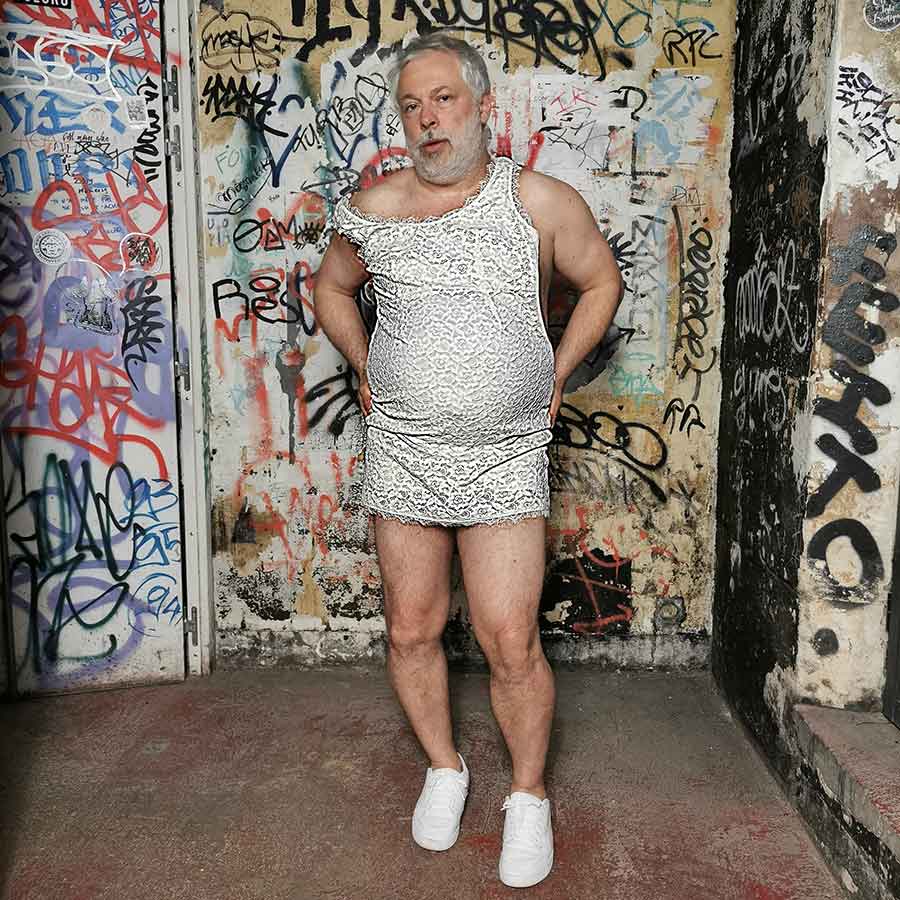
BSA: The footwear and socks are frequently well-matched to the color scheme of the dress, yet they are not directly related to the style. Is this intentional?
JC: Yes, I’m a sneaker addict, and I always wear sneakers, even in a dress. And I’m in urban style all the time, and it’s my job, so I wanted absolutely to create this mix between old-school and contemporary.
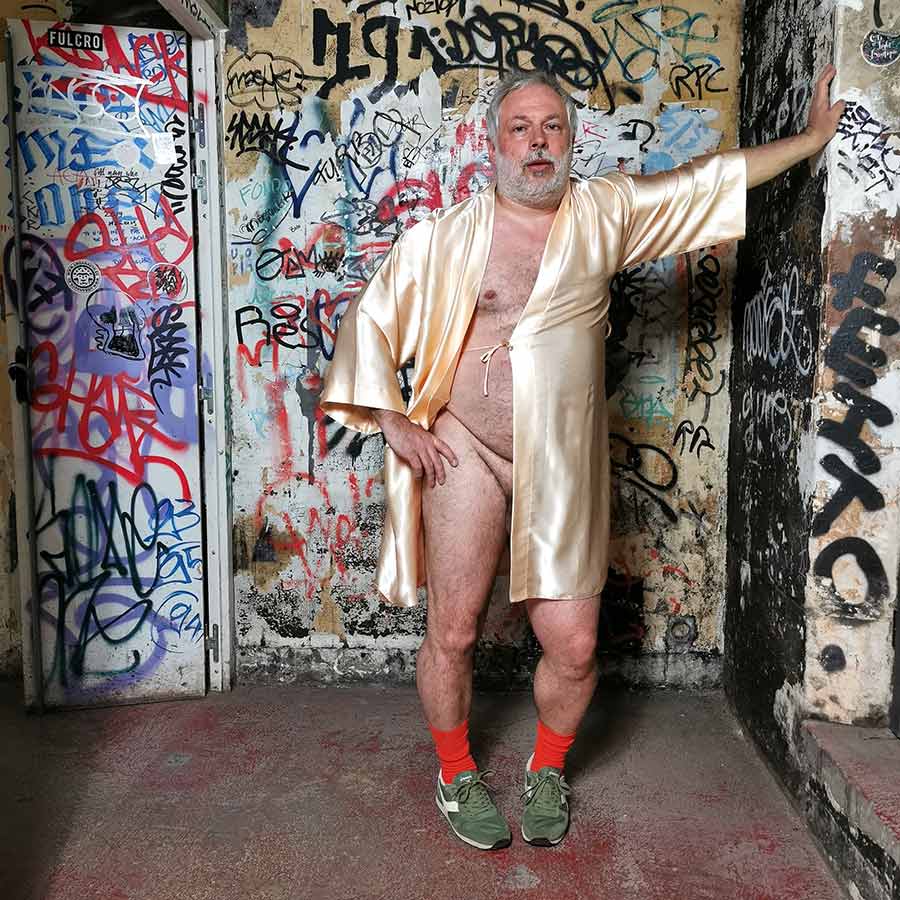
BSA: Does posing before heavily graffitied walls make these modeling sessions more “street” or “urban”?
JC: Yes, I’m a street artist, and this wall is in my home. There are two ways to connect this series of photography in the continuity of my street art work: the urban style association of the sneakers and the walls covered in graff.
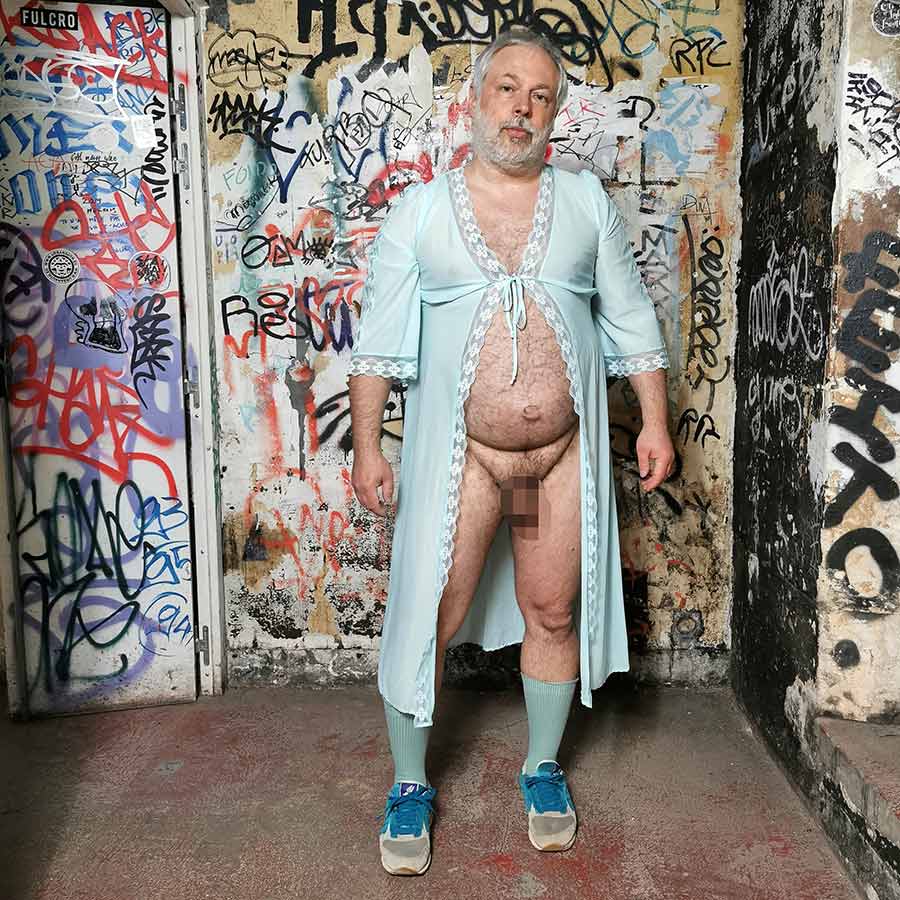
BSA: Are you challenging gender roles and definitions, or are you expressing identity and sexuality?
JC: This work questions gender. There is a malaise in the masculine in our society. I’m uncomfortable with manhood. I’m not gay; I’m a boy-girl, maybe. I’m attracted to women but not attracted to the typical heterosexual way of being. I identify as queer, and I’m sexual attracted to people who identify as this. Heterosexuality is a lifestyle. Maybe I am something like a cross-dyke, because people used to use “dyke” as slang for a well-dressed man. And a well-dressed man for me is a man in a dress. A man cross-dressed.
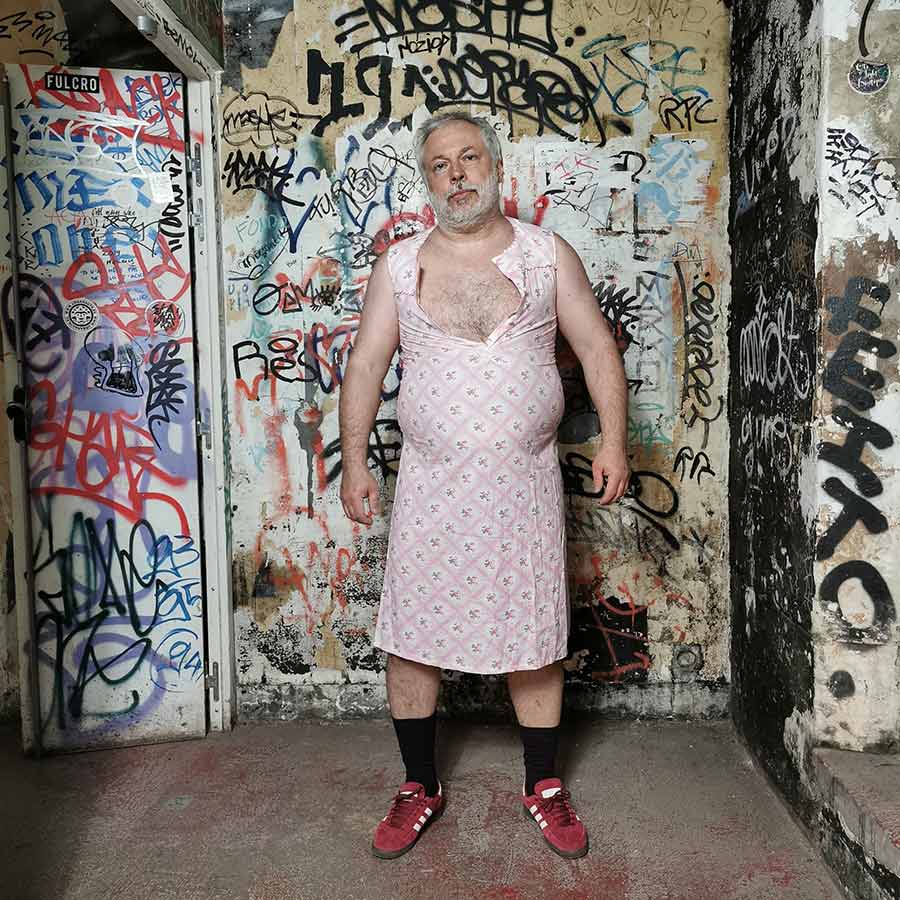
BSA: Is there comedy here?
JC: There is comedy too, sometimes, because I’m funny in my life and the photographs are my work. But these styles are from my nightlife. At my house, my decor is full of old-lady stuff. I’m in love with those things. They are deeply moving.
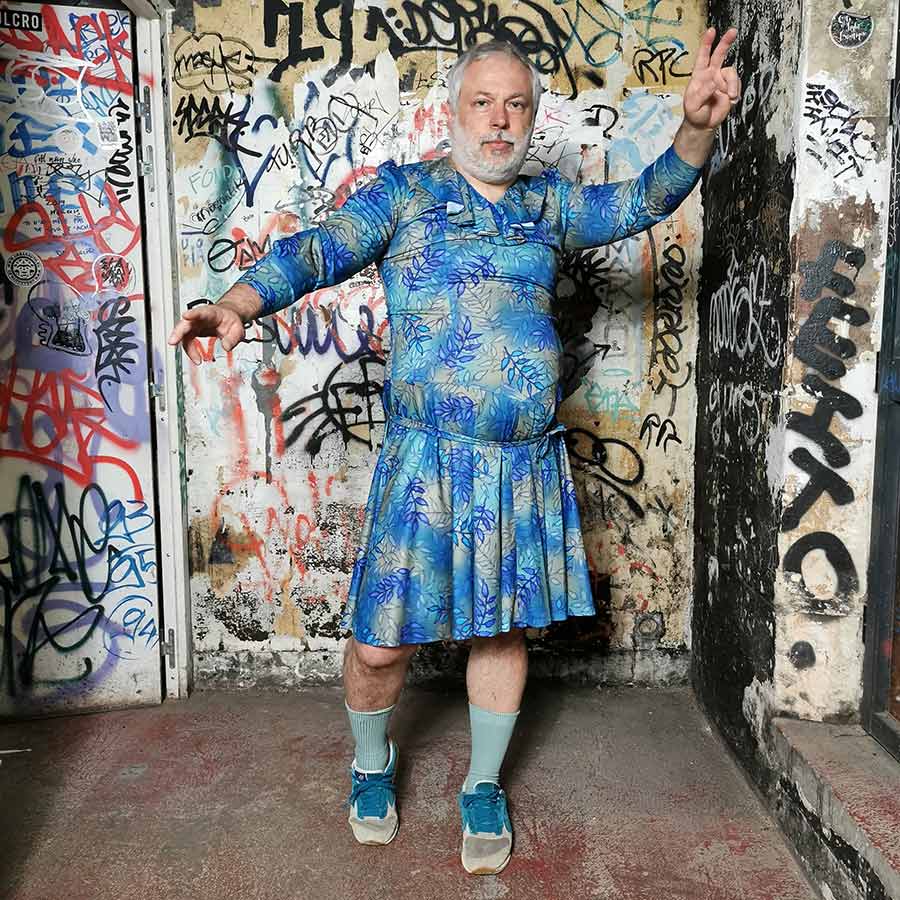
BSA: In terms of society and your personal evolution, could this project have occurred in 1991? 2001? Or is there something about 2021 that makes it feel “right”?
JC: It has been an incredible evolution in the last few years in the overall recognition by people of the variety of genders that exist. Ten years ago, people would have regarded my looks as travesty or comedy, period. I’m not either one, not traditionally hetero. I’m queer. During the day, I wear what could be considered a “heterosexual urban” style – maybe androgynous. At night I’m wearing old lady dresses while keeping my virility and masculine behavior.
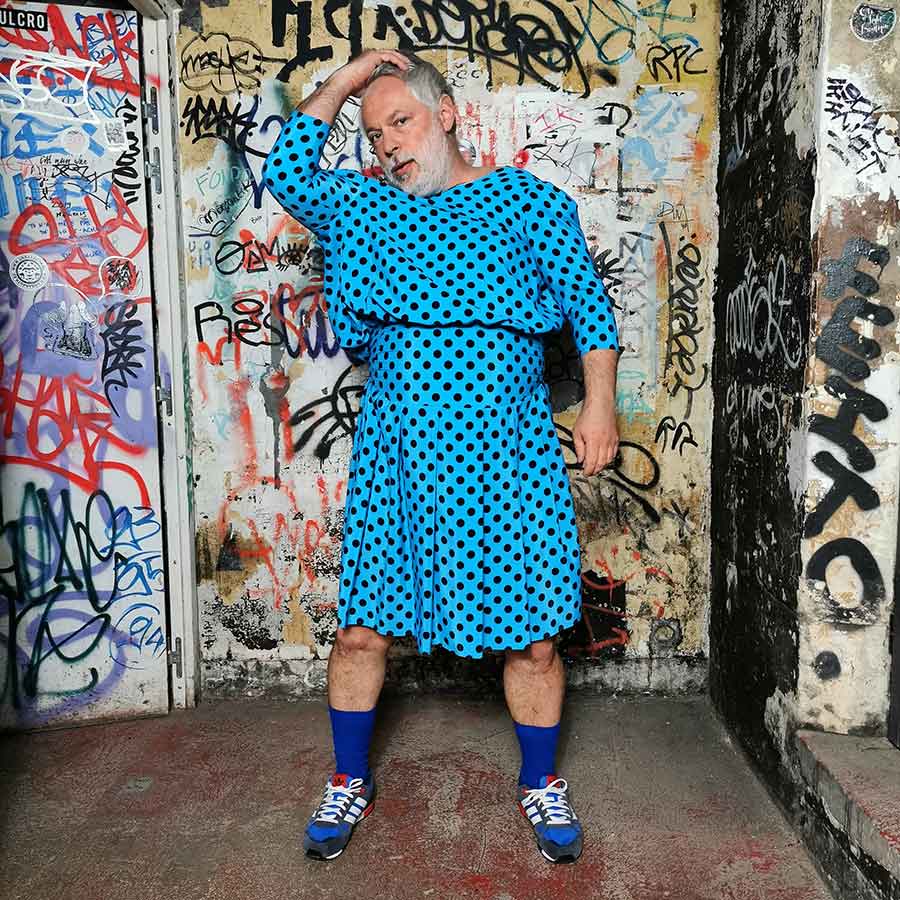
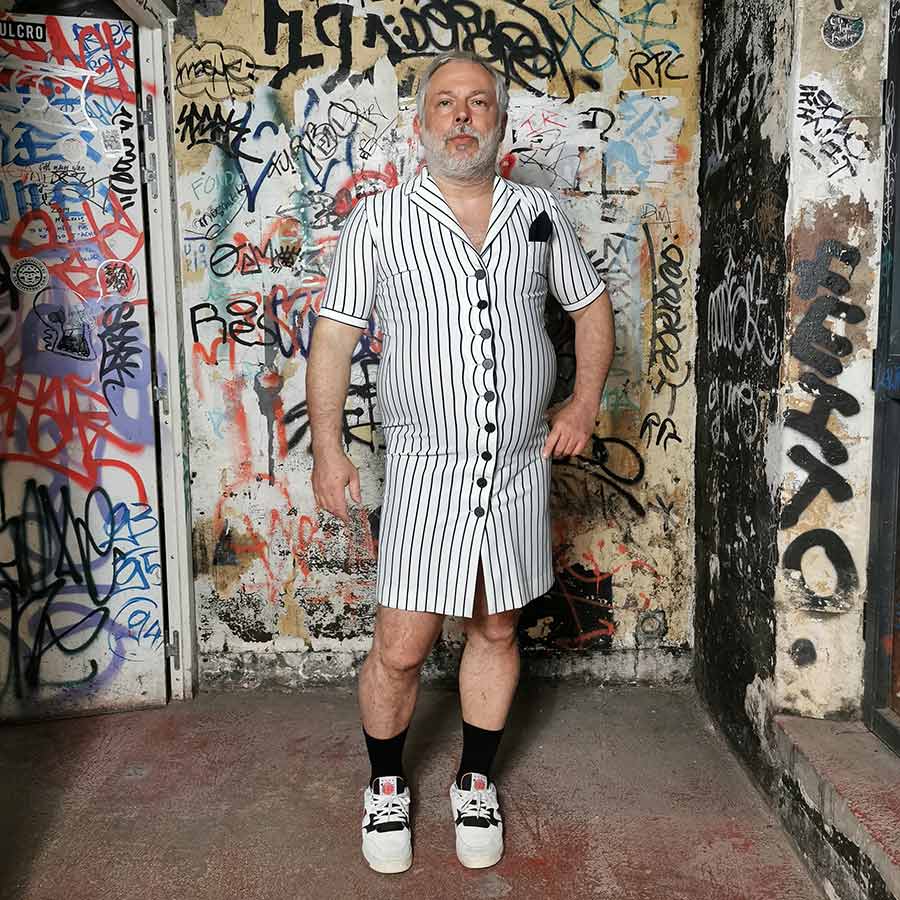
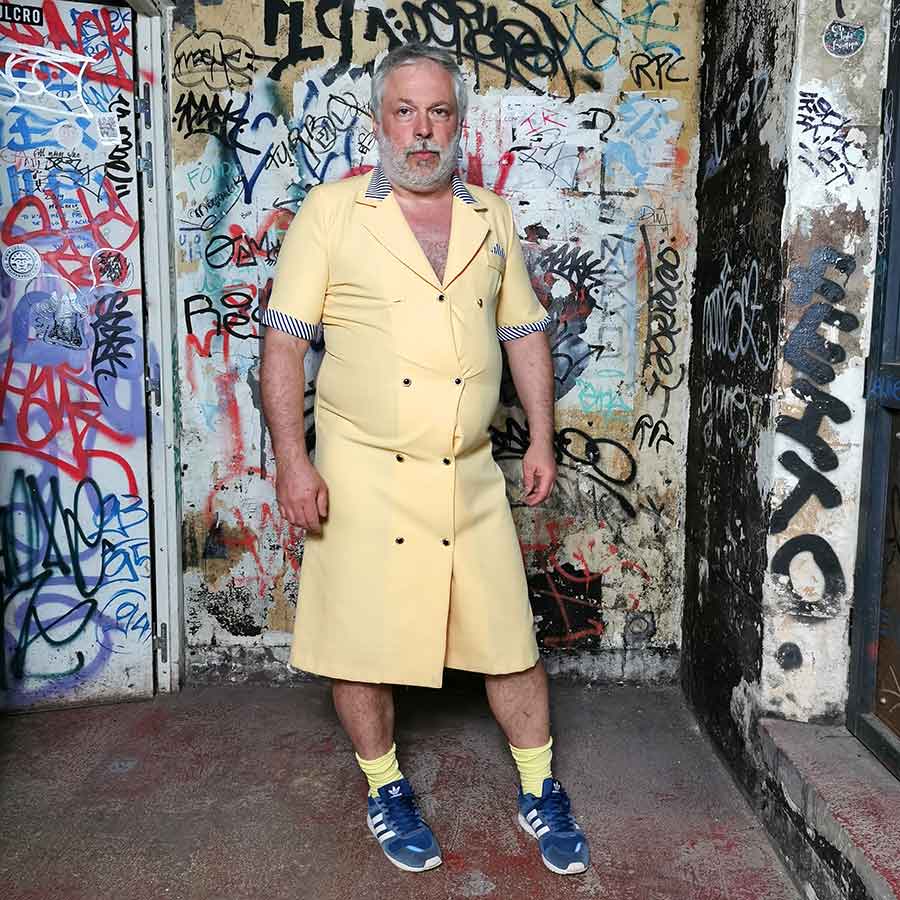
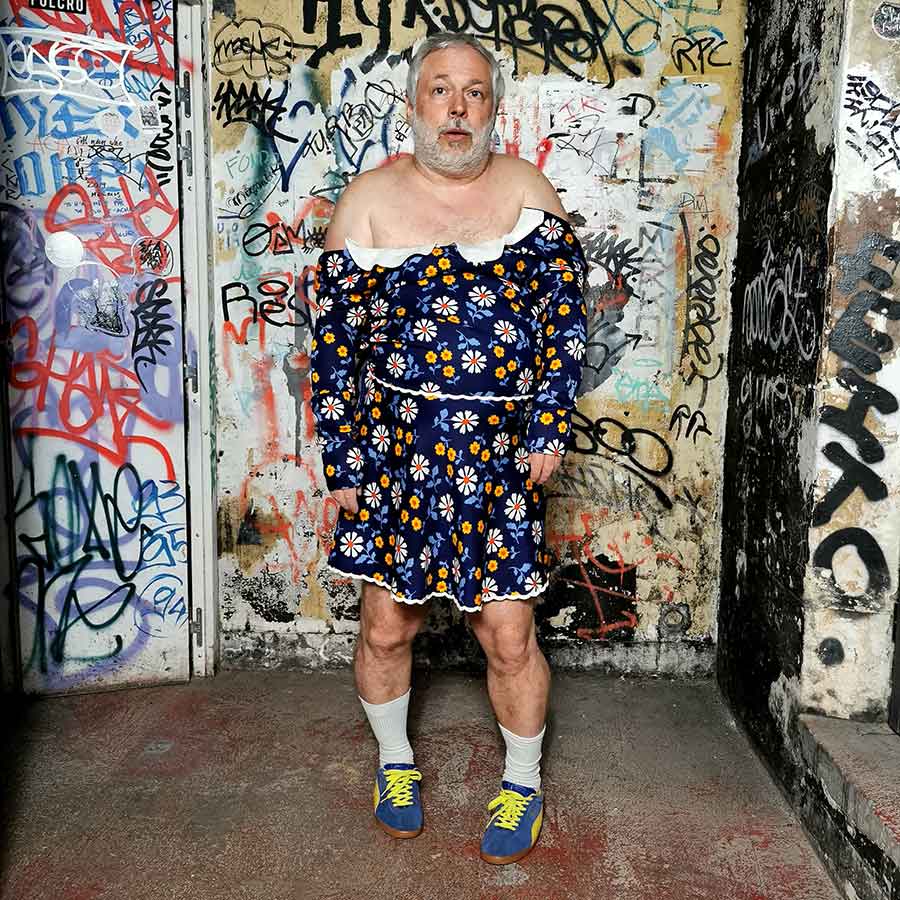
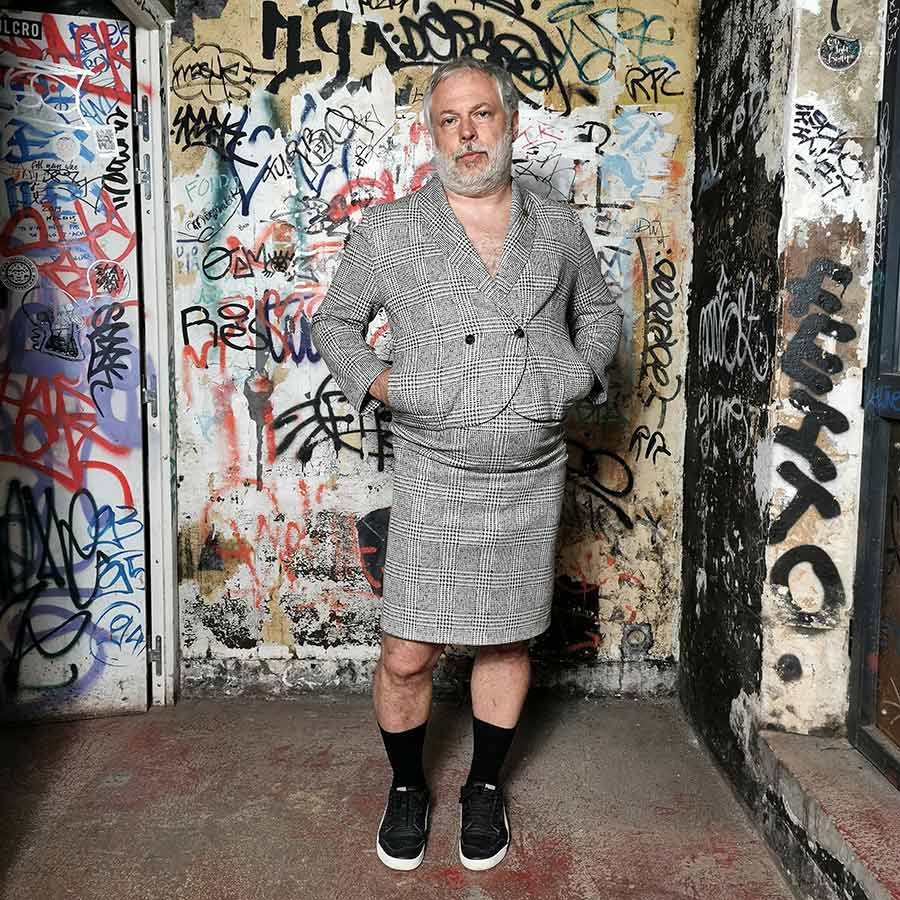
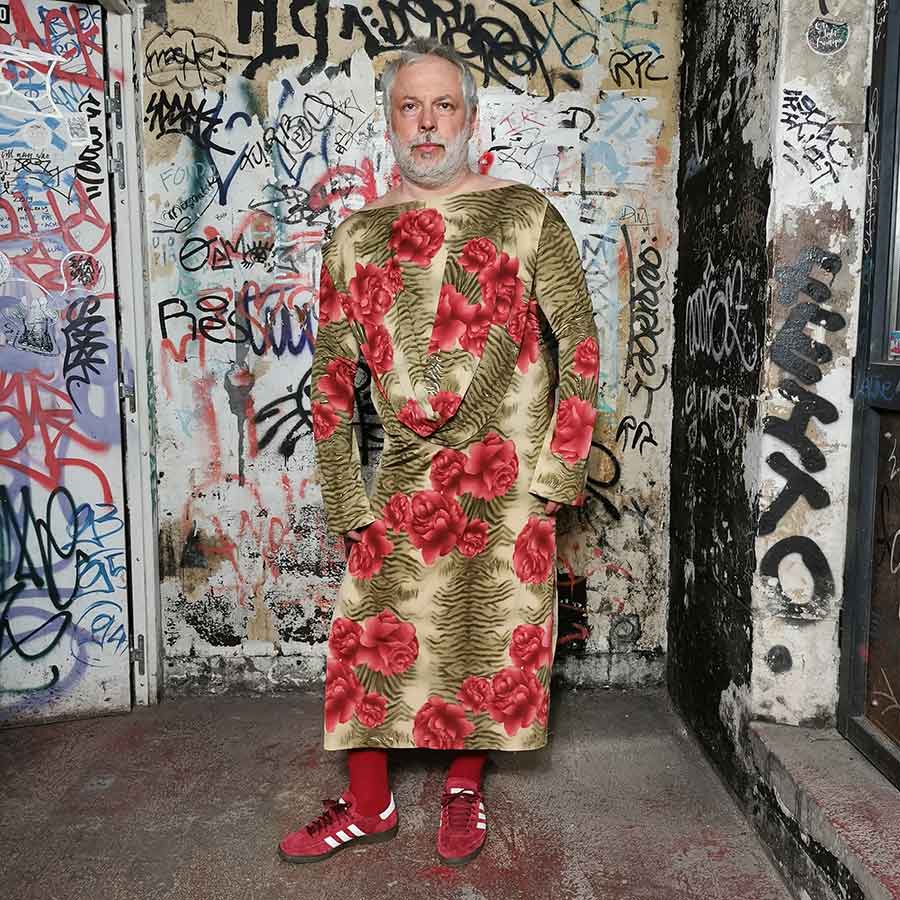
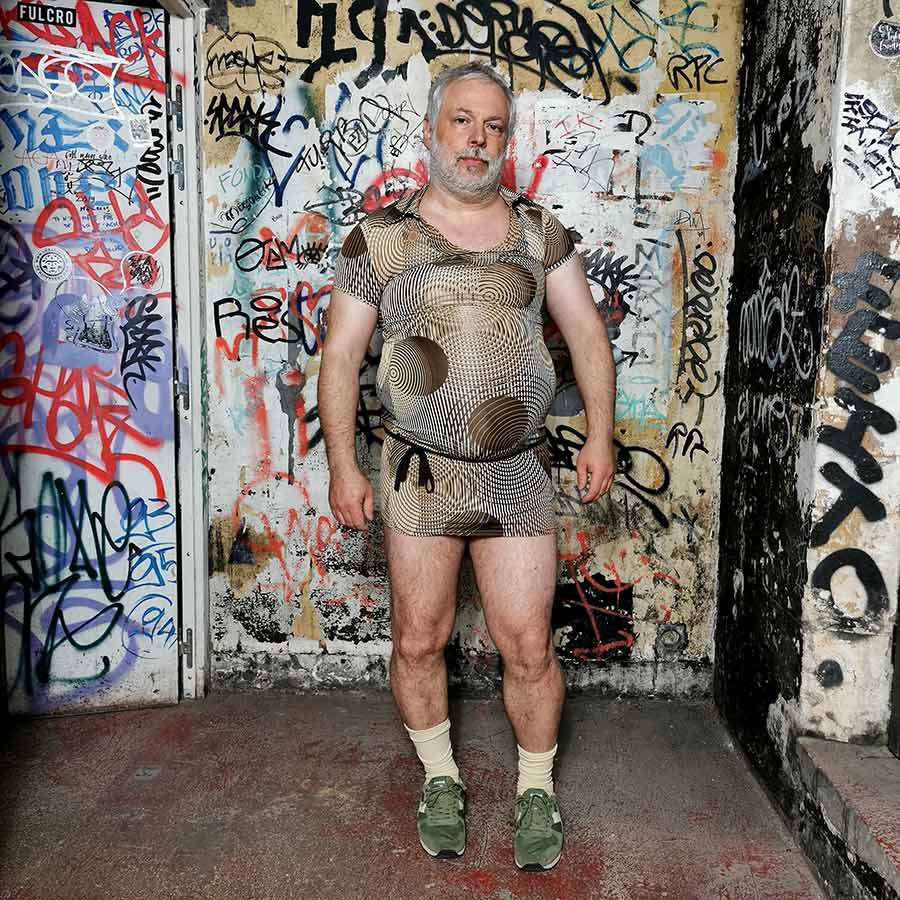
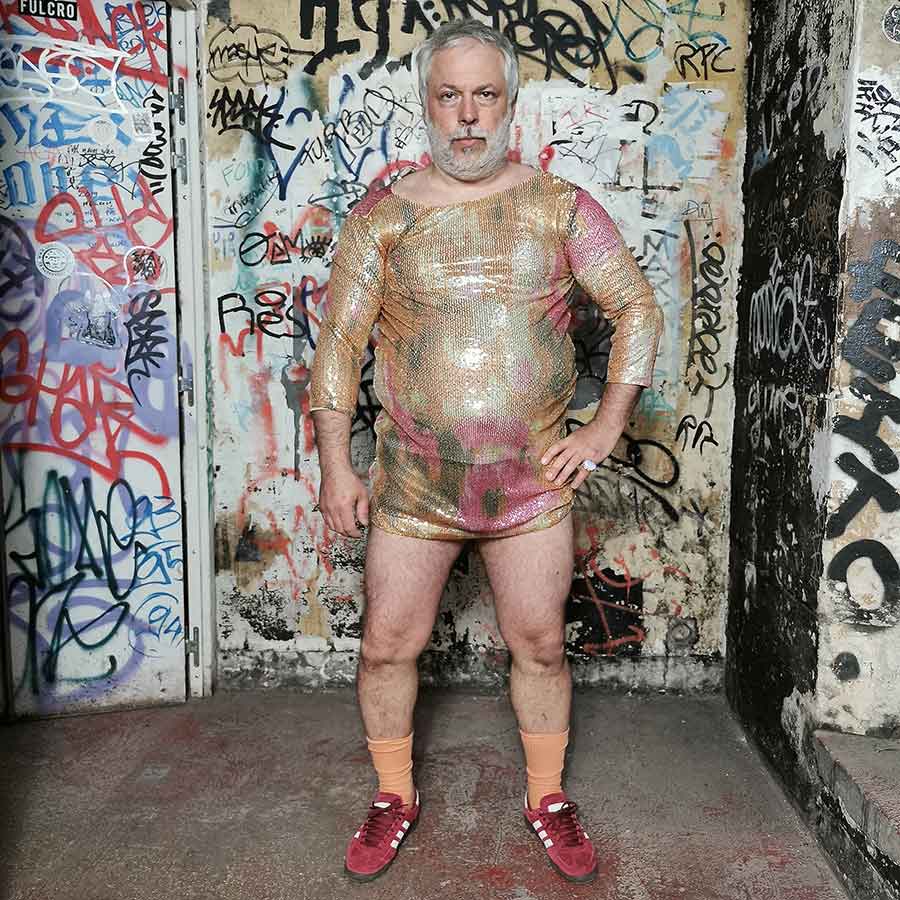
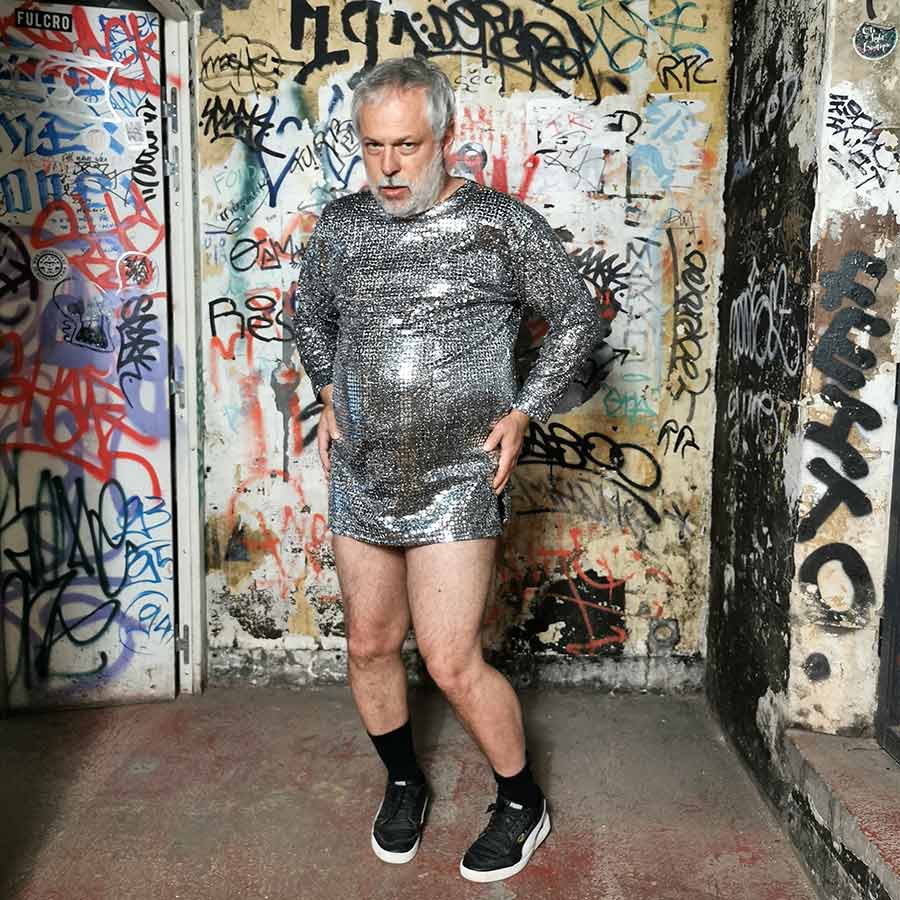
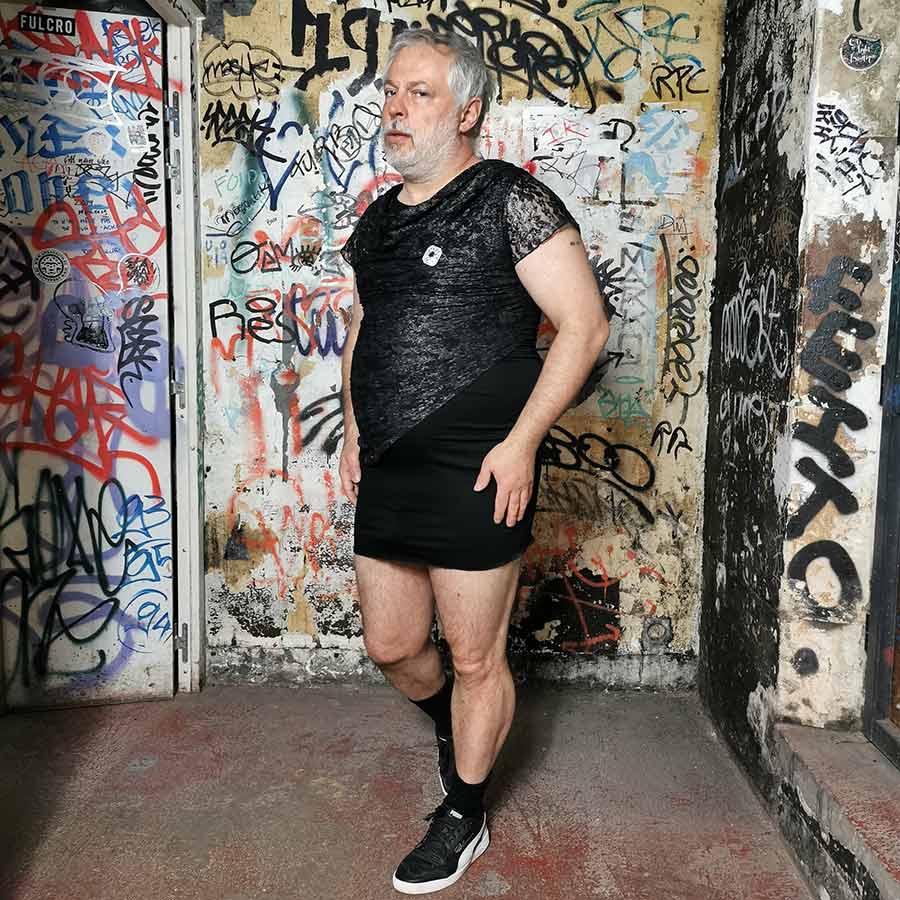
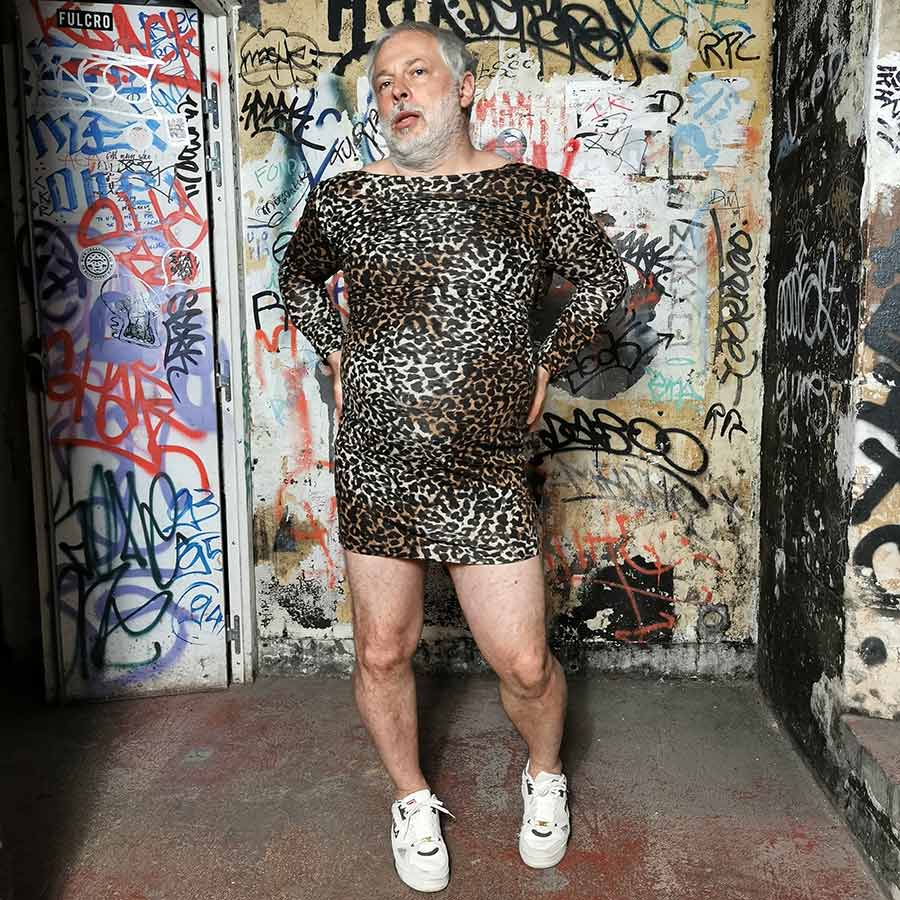
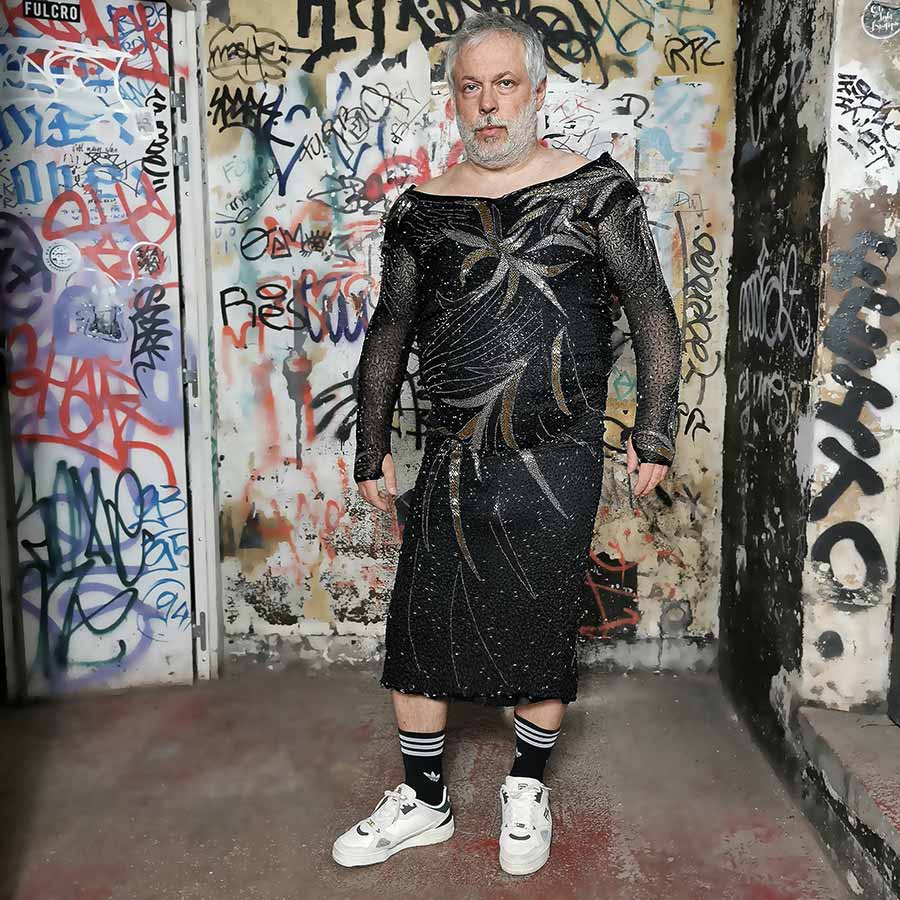
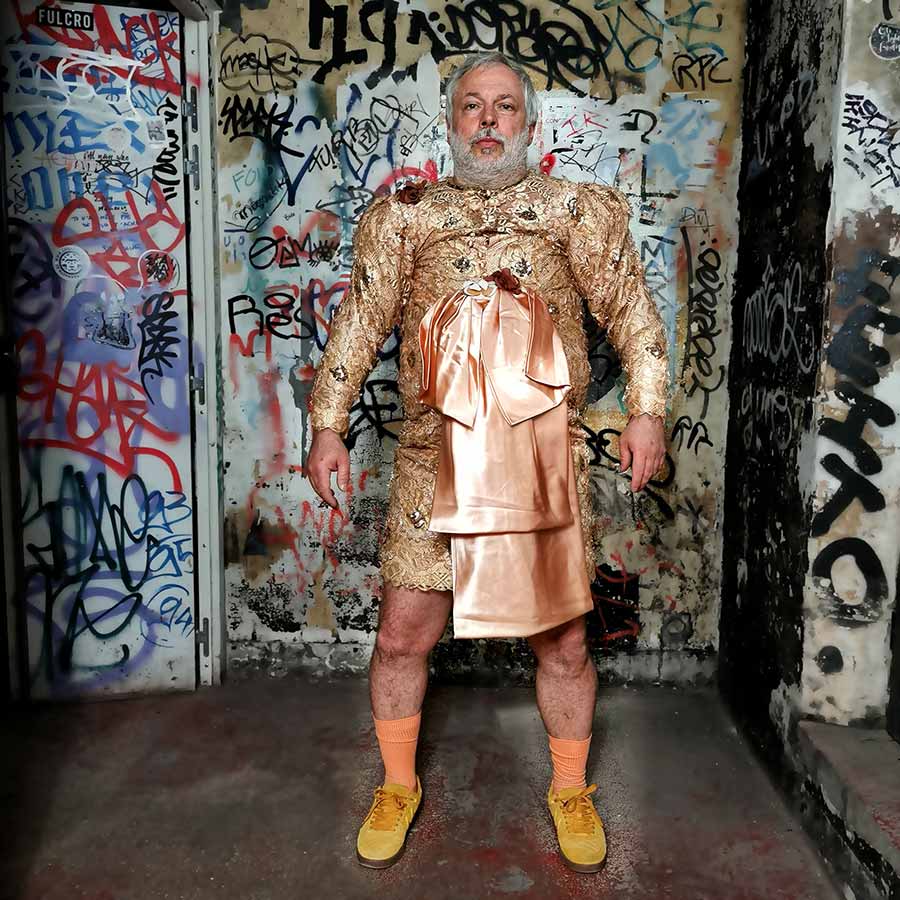
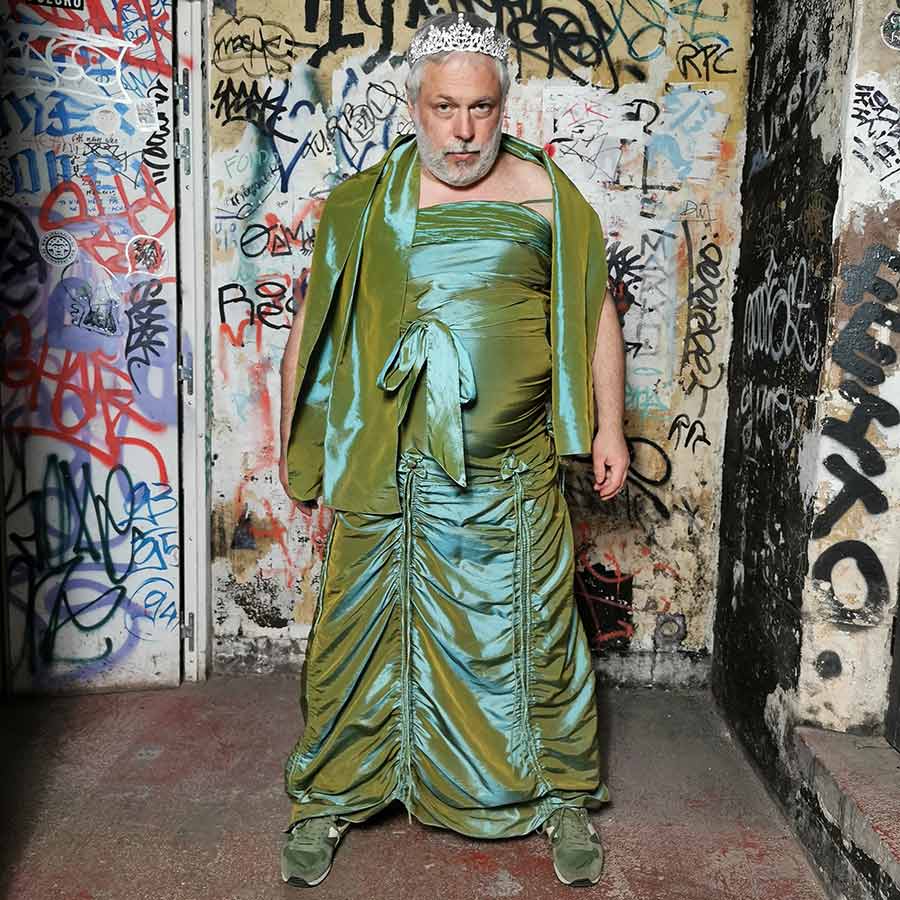
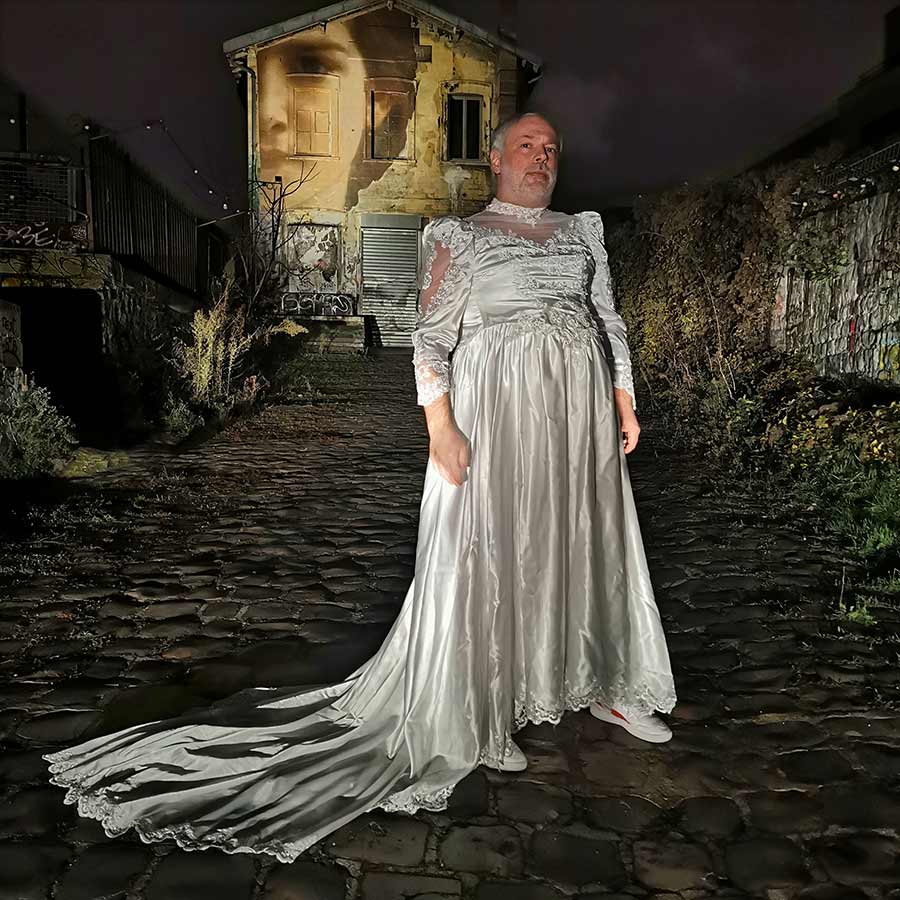
Learn more at
https://www.instagram.com/grand_mozeur_feukeur/
 BROOKLYN STREET ART LOVES YOU MORE EVERY DAY
BROOKLYN STREET ART LOVES YOU MORE EVERY DAY